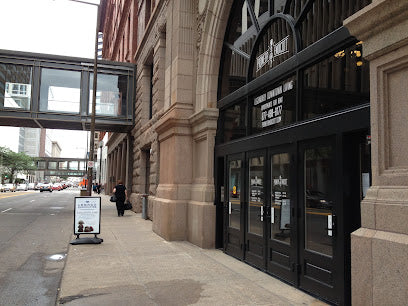On September 5th at a private event in Shanghai, the Swiss chocolate manufacturer Barry Callebaut presented what was gloriously appointed as ‘the 4th type of chocolate’. Chocolate experts from all over the world flew to China to assist to the revolution. It sounded like a big deal: after 80 years from the invention of white chocolate, the R&D department of the company managed to develop another kind of chocolate. Next to dark, milk and white, there is now a pink chocolate called Ruby.
As time went on, the media seemed more confused than ever. Since Barry Callebaut didn’t reveal any info on the actual process behind the pink chocolate, all there was to rely on were mostly enthusiastic marketing claims, and a lot of guessing. From a “new type of cocoa bean” to an “extracted pink powder”, nobody could really wrap their mind around how this Ruby chocolate was actually made.
Ruby chocolate was given this name because of its distinctive pink color. The Switzerland-based company cares to clarify that no flavorings or colors were added to the chocolate to make it look this way. This is an all-natural hue and flavoring from the ‘Ruby bean’. Those beans come from Ecuador, Brazil and Ivory Coast. But genetically they are nothing new. They come from the same species of cacao plant as the chocolate we already know.
Some of those who have personally tried it at the event in Shanghai say that it has little to none of the characteristic cocoa flavor associated with chocolate. Many chalk it up to being a marketing gimmick. Barry Callebaut himself has openly talked about the fact that Ruby chocolate is meant to target Millennials. In the Instagram age where online users go crazy about colorful food, the company is optimistic that Ruby chocolate will create a big buzz among foodies who like to share pictures of their meals. The eye-catching color of Ruby chocolate perfectly meets the need of Millennials for fancy food to share online. This might be a clever marketing strategy, but definitely leaves the door open for critiques. The company can be accused of caring more about the visual side of the chocolate than its actual flavor, making it perfect for pictures and not so much for palates.
Some accuse this new ‘4th type of chocolate’ of being a cost-cutting strategy, as some chocolate experts speculate that the unusual pink color must come from the post-harvesting processes. Once fermented, cacao beans lose this cute color for a more brownish/chocolatey one. Therefore, skipping the fermentation process (which is typically 5-7 days) avoids having the pink color darken, and in turn, saves on labor costs.
Unfortunately, fermentation is the essential step for cacao beans to develop the precursors of the typical flavor of chocolate. By skipping that process, the cocoa beans don’t have time to develop the characteristic cocoa flavor. This would explain why Ruby chocolate doesn’t really taste like chocolate. Also, the fact that the company doesn’t reveal any detail about how Ruby chocolate is processed leaves many to speculate about possible GMO and questionable practices.
Without putting any emphasis on flavor or quality, Ruby chocolate is considered a questionable product born to catch the eye, create buzz, and nothing more. Chocolate experts feel that it doesn’t contribute to the elevation of chocolate as a fine food, nor stimulates consumers to look over its aesthetics. Either way, we can only predict that everyone will still want to taste this so-called ‘4th type of chocolate’, even just once.
A Barry Callebaut spokeswoman stated that global business-to-consumer brands and artisans are expected to explore Ruby chocolate in the coming months, noting it takes 6 to 18 months to introduce these products for mass consumption. Ruby chocolate will be available to customers in the United States, Europe, and Asia once that process is complete.





